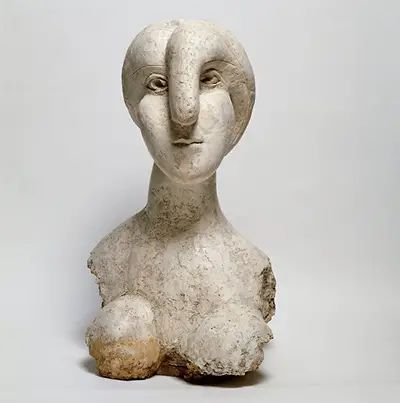Sculpture is an art medium which shows a raw Picasso, untrained and inspired. Many of the inspirations that drove his paintings can also be found lurking in his work with this three dimensional medium, such as african and oceanic art. Primitive, non-western influences appeared early on in his sculpture work, such as his 1908 oak totem, and they also were integral to the rise of cubist painting, in which Picasso was heavily involved alongside the likes of Georges Braque.
The earliest sculptures were relatively straight forward as artist Picasso began to get a grounding and understanding of the principles of this new art form. As his oils created abstract work like Demoiselles d’Avignon, his choice of materials and composition in sculpture was far simpler. It was his guitar sculpture, made from elements of cardboard, which started his journey towards new approaches to this medium. This occurred around 1912/1913.
Where as famous sculptors like Henry Moore would produce work by slowly removing elements of a large block of material, Picasso would start to join small parts together to create an abstract form of his chosen object. The finished form of the guitar was also far from any kind of reality, marking his movement into modern art sculpture as a form of true expression. A metal version of Guitar was also created at a later date as this artist continued to experiment in sculpting the same objects our of different materials. After an extended break Picasso returned to sculpture around the late 1920s.
Bronze and iron now dominate, with all manner of other mediums also making an appearance as much of his work increases in complexity. At this stage in his career Picasso is no-longer dwelling on what is an acceptable form of sculpture, instead choosing to push the boundaries as far as possible. The arrival of his first sculpture workshop also helps him to experiment to the maximum.
Notable later works in sculpture included his plaster busts of his mistress Marie-Thérèse Walter. Sexual themes are placed into these as was the case with many of his lavish oil paintings. Further topics from his paintings also received the sculpture treatment, such as the Bull, a renowned symbol of Spanish culture. Around this time Picasso was also working heavily in pottery, but these are covered separately in the ceramics section.


